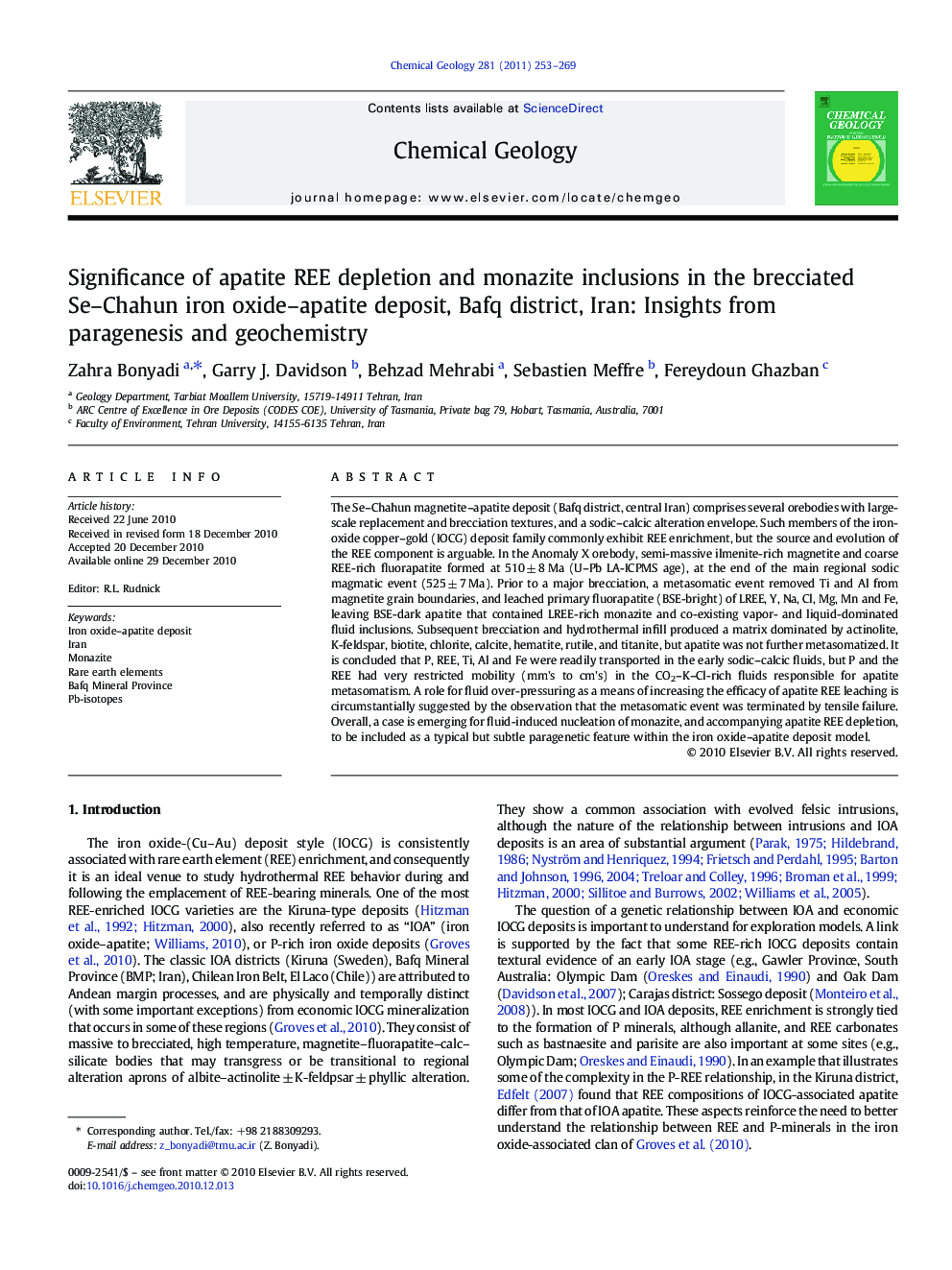| کد مقاله | کد نشریه | سال انتشار | مقاله انگلیسی | نسخه تمام متن |
|---|---|---|---|---|
| 4699745 | 1637673 | 2011 | 17 صفحه PDF | دانلود رایگان |

The Se–Chahun magnetite–apatite deposit (Bafq district, central Iran) comprises several orebodies with large-scale replacement and brecciation textures, and a sodic–calcic alteration envelope. Such members of the iron-oxide copper–gold (IOCG) deposit family commonly exhibit REE enrichment, but the source and evolution of the REE component is arguable. In the Anomaly X orebody, semi-massive ilmenite-rich magnetite and coarse REE-rich fluorapatite formed at 510 ± 8 Ma (U–Pb LA-ICPMS age), at the end of the main regional sodic magmatic event (525 ± 7 Ma). Prior to a major brecciation, a metasomatic event removed Ti and Al from magnetite grain boundaries, and leached primary fluorapatite (BSE-bright) of LREE, Y, Na, Cl, Mg, Mn and Fe, leaving BSE-dark apatite that contained LREE-rich monazite and co-existing vapor- and liquid-dominated fluid inclusions. Subsequent brecciation and hydrothermal infill produced a matrix dominated by actinolite, K-feldspar, biotite, chlorite, calcite, hematite, rutile, and titanite, but apatite was not further metasomatized. It is concluded that P, REE, Ti, Al and Fe were readily transported in the early sodic–calcic fluids, but P and the REE had very restricted mobility (mm's to cm's) in the CO2–K–Cl-rich fluids responsible for apatite metasomatism. A role for fluid over-pressuring as a means of increasing the efficacy of apatite REE leaching is circumstantially suggested by the observation that the metasomatic event was terminated by tensile failure. Overall, a case is emerging for fluid-induced nucleation of monazite, and accompanying apatite REE depletion, to be included as a typical but subtle paragenetic feature within the iron oxide–apatite deposit model.
Research Highlights
► Apatite metasomatism occurs due to fluid over-pressuring immediately prior to brecciation.
► Apatite metasomatism is the first consequence of a shift to K-rich fluids in the system.
► The genetic affinity of the apatites is still recognisable on a Y–Sr classification diagram despite significant removal of LREE.
► Apatite first formed at 510 ± 8 Ma, at the end of or after regional sodic granite intrusion in the BMP.
► Pre-brecciation metasomatism leached the margins of magnetite crystals of Ti and Al.
Journal: Chemical Geology - Volume 281, Issues 3–4, 24 February 2011, Pages 253–269